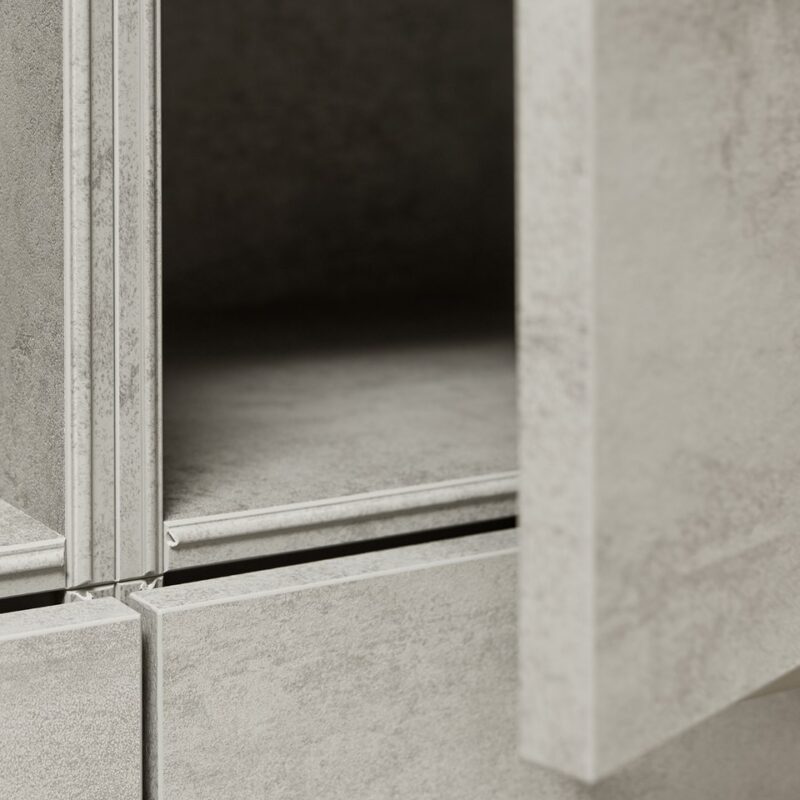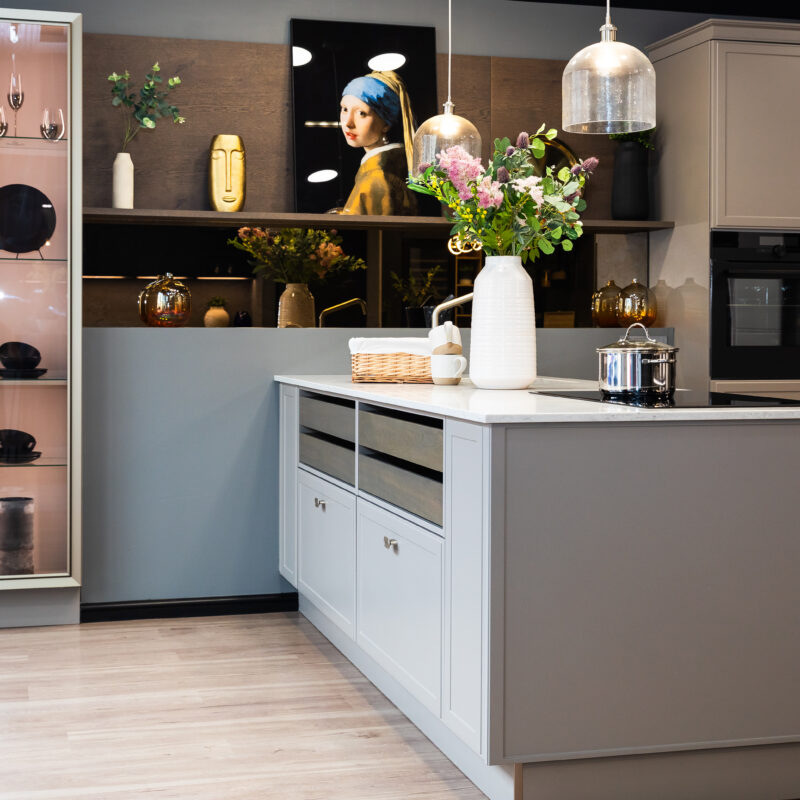Taking care of your new Nolte Kitchen
Steam, frying oil, foods that cause stains – a kitchen has a lot to cope with. Cooking vapours and dust form a particularly tight connection. That is why our furniture is protected by high-quality, easy-care surfaces that are easy to clean. But beware! Aggressive liquid detergents, scouring agents, polishes, wax, solvents, vinegar-based cleaners and steam cleaners are a no-no, just like acidic and silicone-based cleaning agents. Nitro-cellulose combination thinners or synthetic resin thinners can also cause damage and will void your warranty.
Keep reading to find out how to care for your worktops and fronts.
Nadine Rowley


Less is more
The rule of thumb is: Keep it simple. If you use any cleaning agent at all, simply grab a mild liquid cleaner and a completely clean, soft, preferably new cloth or sponge. Why new? Because dust and other fine grains left over from earlier cleaning can act like sandpaper and are a risk to any surface, no matter how well-sealed it is. Make your cleaning tool damp but not wet. Moisture may enter bar handles or edges, causing the wood to swell.
By the way, this simple cleaning method applies just as much to the interior of cabinets as it does to handles. But as always: The exception proves the rule, so let’s look at each surface and its special features in detail.
Laminate fronts
Cleaning can be so easy: Warm water with a few drops of dishwashing detergent is enough to clean laminate surfaces. Use a microfibre cloth to do so. One look at the packaging will tell you whether your cloth is suitable for the purpose.
Ensure that your cloth is nice and damp before wiping the fronts with it. For persistent dirt and stains you can use commercial ethyl alcohol, but test it on an inconspicuous spot first.

Lacquer and laminate
Lacquer and laminate kitchen fronts should also never be cleaned with a dry cloth. This includes surfaces made of real or UV lacquer, glass laminate or lacquer laminate but also our cement and metal fronts with original materials, as these are sealed with a layer of lacquer.
In this case, the cleaning agents of choice are special cleaning agents for kitchen fronts. Under no circumstances should you use glass cleaners!

Wooden fronts
While our wooden fronts are also sealed with lacquer, they are more low-maintenance where cleaning agent is concerned.
No matter whether your front is made of solid wood or veneer: A slightly damp cloth is enough. Always wipe in the grain direction, immediately remove any dirt so that it does not dry on and then wipe the fronts dry. This prevents moisture from entering edges or profiles.
Glass fronts and glass recesses
No matter whether your surface is glossy or matt: Simply take a glass cleaner or neutral cleaner combined with a soft sponge or (leather) rag. On glass with a satin finish, grease and oil may leave stains that create a shadow effect.
If the glass cleaner is not effective, try a brand product for glass-ceramic cooktops that is not overly abrasive. Rubbing a moistened dirt eraser over the glass with slight pressure may also be effective.

Keeping your Nolte Kitchen looking as good as new is simple with the right cleaning techniques. From laminate to wood and glass surfaces, each material has its own care instructions. Avoid harsh cleaners and follow our expert advice to prevent damage and extend the life of your kitchen door fronts.
More from Nolte insight
Read More
Design Advice
Keeping an eye on the latest trends and design ideas that make your kitchen feel even more like home.

Living
From quick-win recipes and styling advice to party-hosting hacks and storage tips, we’ll help you turn your kitchen into your real living room.

Real Kitchens
You don’t have to imagine what a Nolte kitchen will look like in your home — our gallery of customer kitchens will show you.
Your recipe to a beautiful kitchen
Kitchen inspiration, special offers, expert advice. Welcome to a newsletter you’ll actually want to read.
By choosing to sign up, you will join our mailing list. You can opt out at any time.










